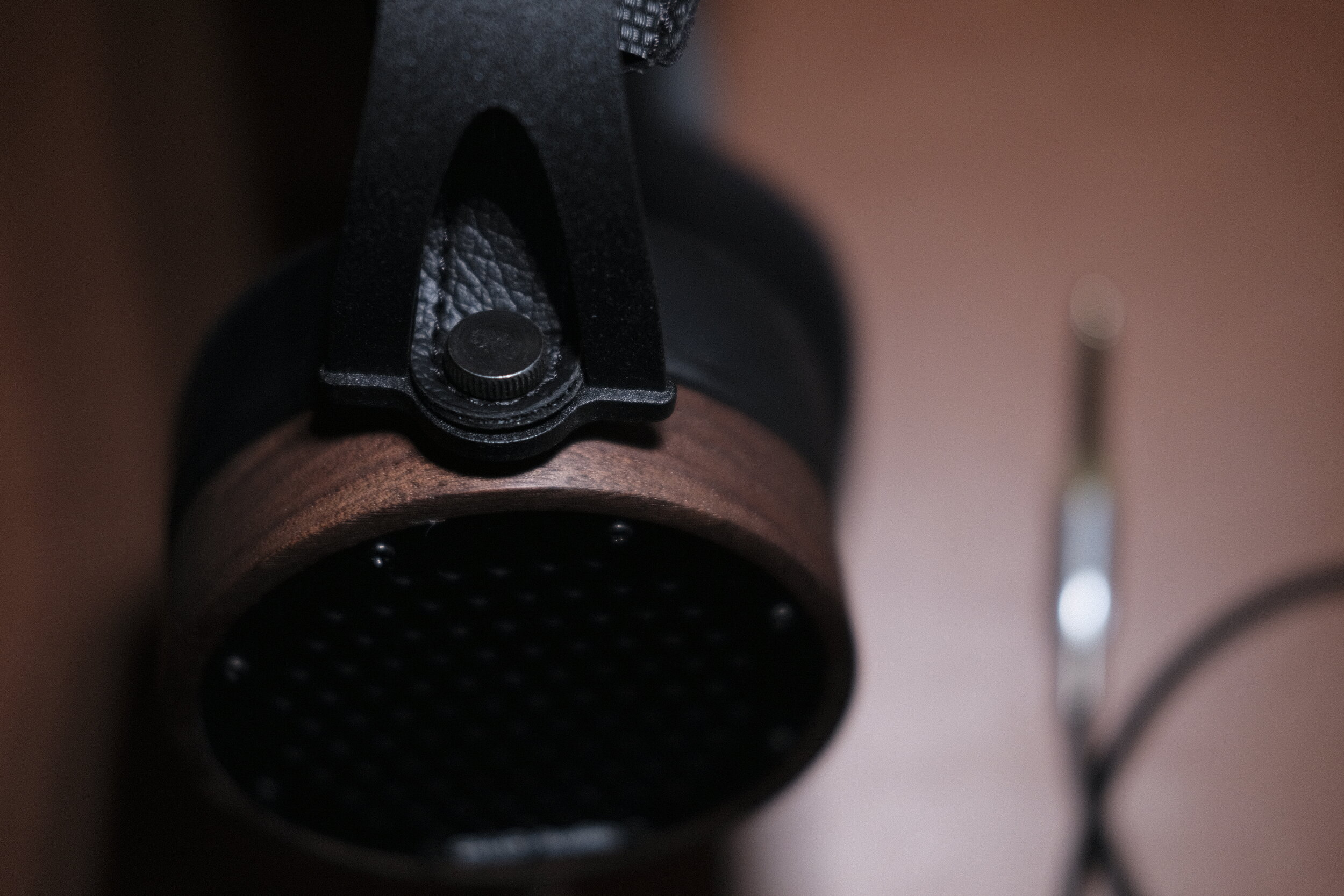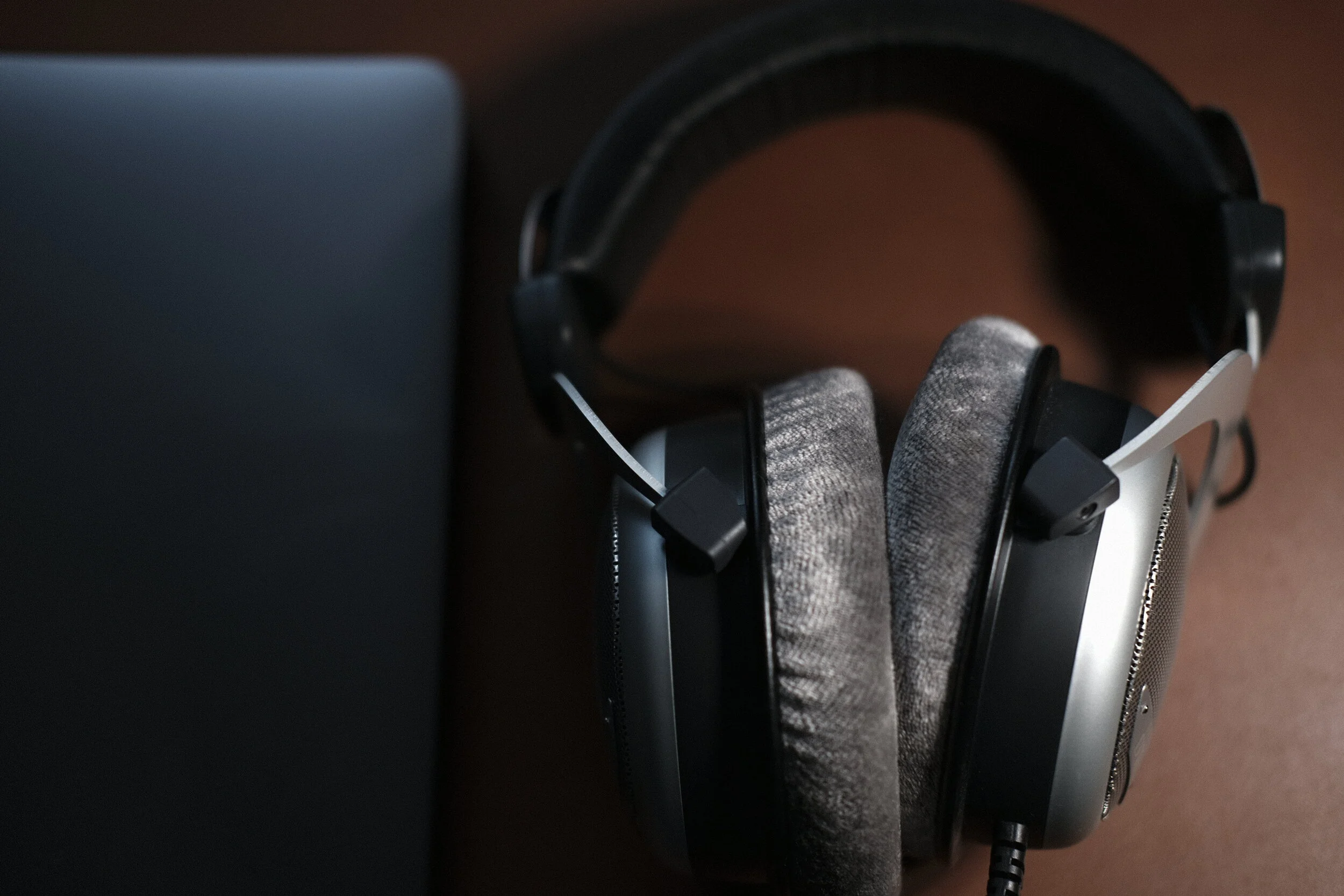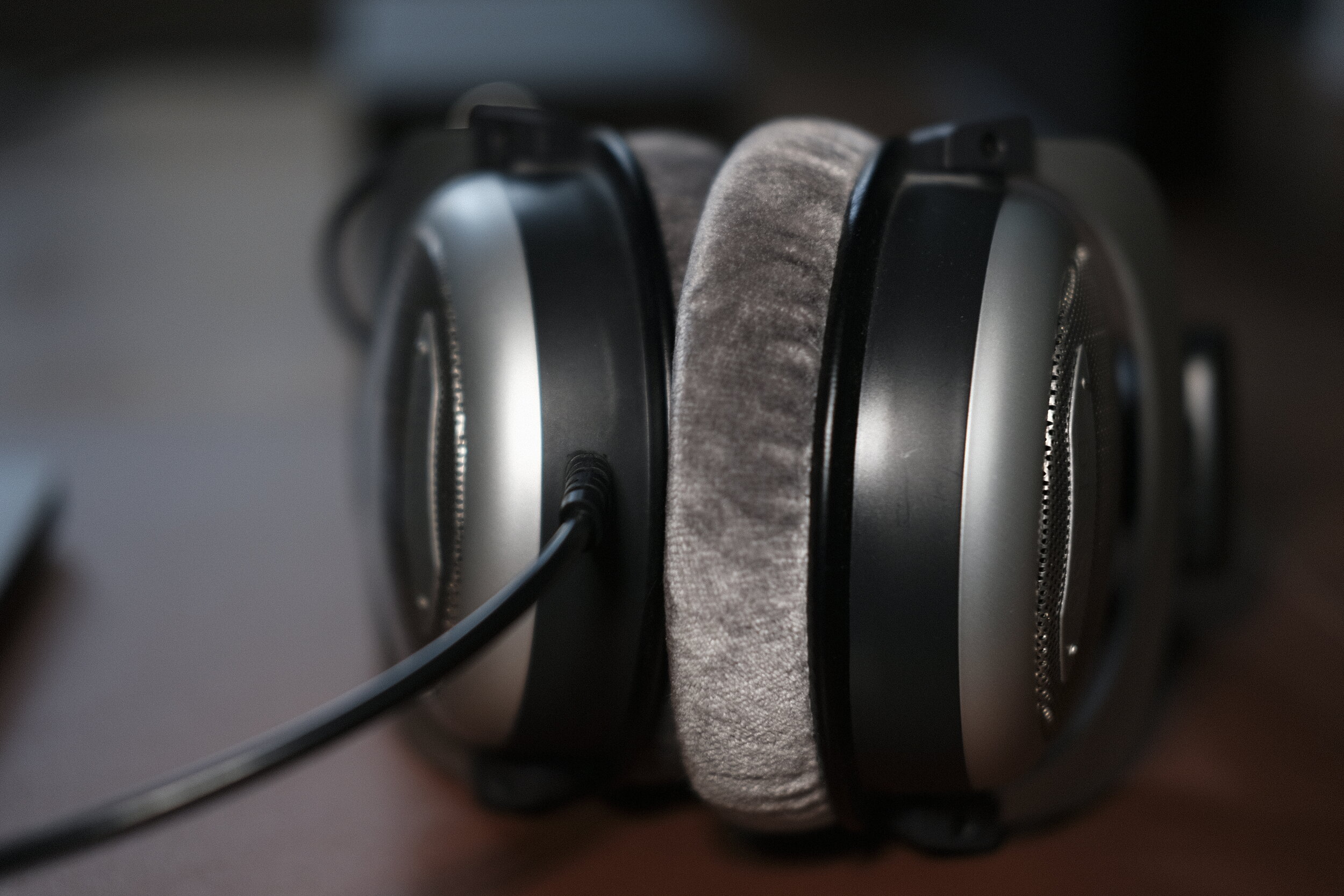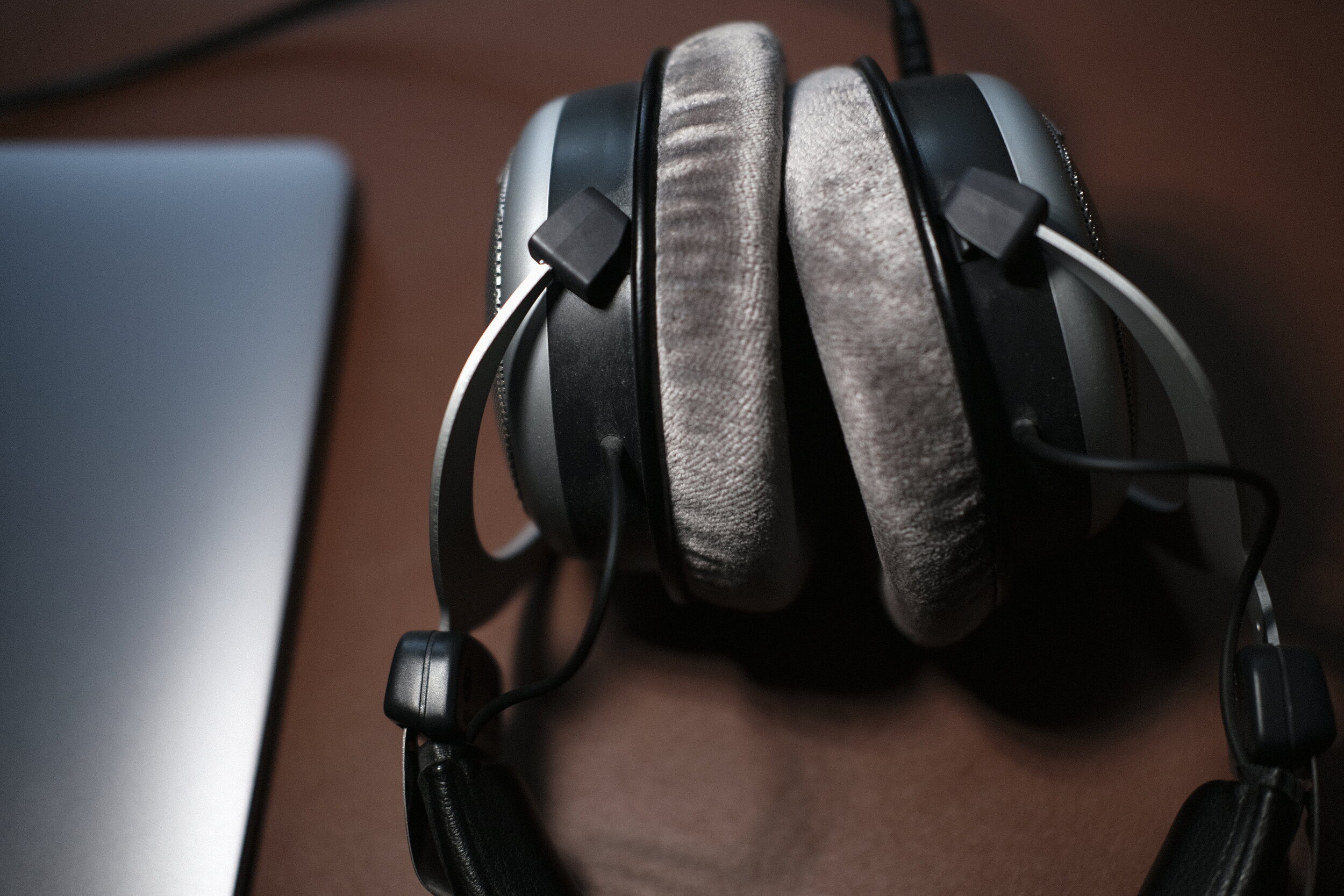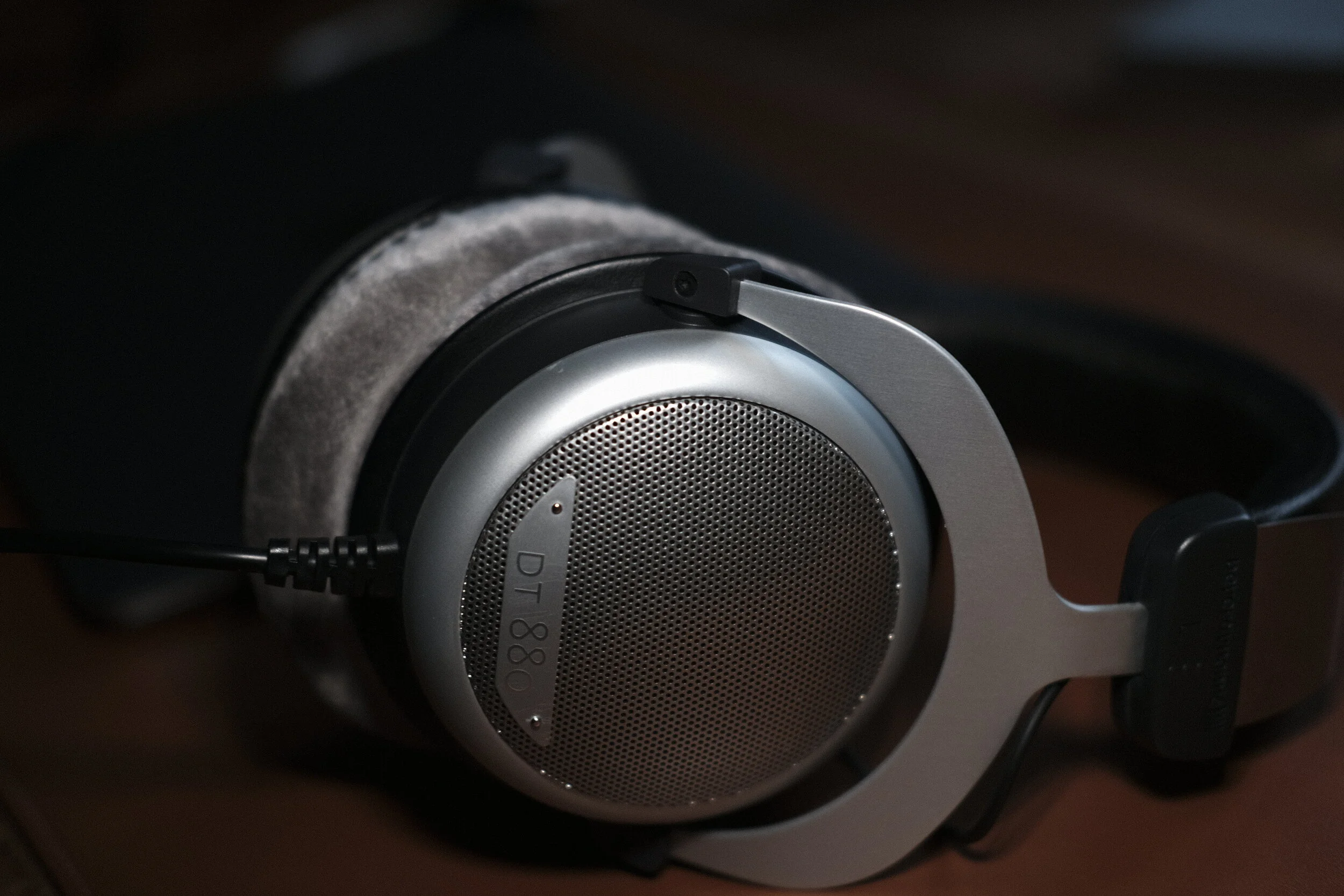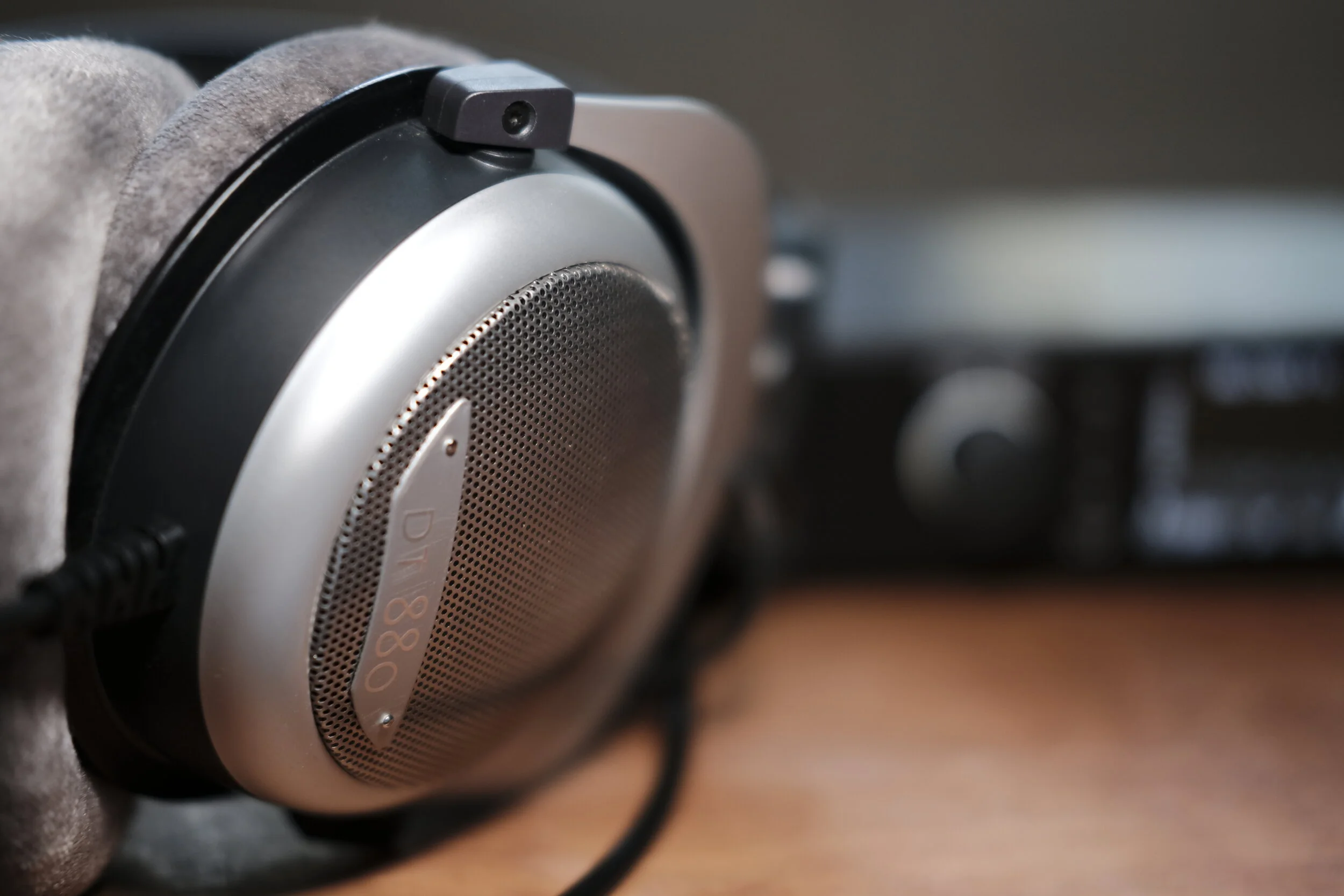Ollo Audio S4X Reference Headphone Review
Ollo Audio is a relatively new headphone company, based in beautiful Slovenia. They are not famous, at least not yet; but, they already managed to create some buzz around their two headphones, a closed and an open back. Both designs promise a natural response, while the open headphone, the S4X, is marketed as reference headphone.
My main complaints about most headphones are that they are either too bass-heavy, too harsh in the highs, or too expensive. Therefore, as soon as I heard about Ollo's ambitions to produce a high-quality, reasonably priced open-back headphone with flat frequency response, I knew I had to try it.
From the edge of the Alps
The S4X comes in a rather minimal box, both in size and appearance. Upon opening, one is treated with a canny slogan: "Save the planet, you can't listen to music in space". Along with the headphone, here is a small black paper pouch that protects the removable cable, and a pleather carrying bag. The presentation is simple and imparts a handcrafted feeling.
There is also a black envelope that encompasses various documents. Besides a manual, there is a printed frequency response measurement and a hand-signed certificate of authenticity. Neat touches. Lastly, a caution notice alerts us not to press hard the headphones on flat surfaces, to avoid distorting the membrane of the speakers.
Manufacturing and comfort
The headphone itself looks quite handsome and feels very well made. Quality materials have been used throughout; wooden earcups, stainless steel grills and headband, along with memory foam earcups. The weight of the S4X is substantial, but the self-adjusting strap in combination with the plush feeling of the earpads, made of a hybrid of velvet and pleather, make them very comfortable to wear for hours.
Although these are over-ear headphones, the earpads are what I consider as medium-sized. They fit my ears snuggly and are deep enough, but there is not much space around. If you have larger ears than average, you will feel them getting squeezed.
Another nice touch is the removable cable that terminates on a dual 2.5mm TRS for the cups, and 3.5mm TRS that connects to the source. A 3,5mm to 6.3mm adapter is included to accommodate any setup. The cable is 2 meters in length, of good quality and light, so it doesn't weight down the headphone. It has cloth braiding until the Y split for extra protection; then divides into two red rubberized cables that connect into each cup to minimize microphonics.
The cups don't have L/R markings; they become left or right speakers depending on which cable-end you connect to them. This interchangeability makes servicing very easy, but since the lettering on the cable is tiny, it gets a bit annoying to look for it every time. A coloured connector would have been preferable, but that's only a small annoyance and is easy to fix.
Reference(s)
When I received the Ollo's about two months ago, I let them burn-in for about 100 hours and have been using them since almost daily. I've been directly comparing them with the Focal Clear Pro, various Beyerdyanamics, and AKG's, along with PSI and Focal studio monitors.
A fantastic headphone for me doesn't have a sound of its own; it gives me an honest presentation and ensures a seamless transition between it and my monitors, regardless if I use headphones for mixing, mastering, or pure enjoyment.
Reality check
I'm happy to report that Ollo's claim for a flat headphone is not just marketing talk.
The S4X has a full response and shows remarkable depth in its presentation; the instruments feel real. The sound is natural with fast transient response. Also, there seems to be an absence of earcup resonances.
Other than the slightly elevated low-end, no frequency stands out. Bass is solid-sounding and has an excellent extension. Mids are delicate and detailed, and highs are smooth and non-fatiguing. The sound is true to the source. Ollo's have a similar to my monitors' response; much more than my other headphones - other than the Focal Clear Pro.
The soundstage is average with an intimate presentation; the Ollo's put the listener on the stage with the musicians. I also get the impression that the S4X are a bit like a semi-open headphone instead of a fully open design. Detail retrieval is above average, but not in the realm of the Focal Clear or Beyer T1.2.
Listening to properly captured classical guitar recordings, the sound is immersive with every detail presented accurately. If there are problems in the recording or performance, the headphone will show it without shouting at you. This makes it both an excellent tool in the studio and an enjoyable listening experience at home.
In use
With an impedance of 32 Ohm, the headphone is easily driven even by mobile devices. It does sound considerably better with my RME ADI-2 Pro FS or the RME Babyface Pro FS.
Their small size makes them also, great for location work; although Germany is on lockdown since November and I didn't have the chance to test them in that application.
A modular approach
Aside from the sound, what's cool about Ollo is the philosophy behind the designs. They allow their customers to service the headphones themselves, if the necessity arises, as every part is easily replaceable at home. To sweeten the deal, even more, they offer a five-year warranty, and the ability to upgrade the headphones with new drivers and other parts.
In other words, Ollo promises a customer experience opposite to that of almost every other headphone (and not only) company.
Complaints
My only gripe with the S4X is the excessive rining of the stainless steel headband. It only occurs when you put them on or touch it for some reason, so in actual use, it is not a problem, It does give a negative impression on an overall very well thought out headphone.
Honestly, I got used to it and it doesn't bother me anymore, but I wish that Ollo would find a replacement or a way to decouple the headband from the driver.
I would also like to see a hardshell case option, as it would offer better protection when travelling.
Conclusions
Ollo's marketing is quite aggressive and bold, but it is probably necessary at this stage as they need to get noticed. Unlike some of the most popular brands which have flooded the market with numerous models, Ollo seems to listen to their customers and refine their designs.
I don't know if the S4X is a brutally honest headphone, like Ollo claims; but it is an accurate and detailed headphone, without being overly analytic.
The refined and natural sound, coupled with excellent craftsmanship, and the fact that there is no middle man to inflate the prices, make it one of the best headphones in their price range and well above.
Beyerdynamic DT 880 Premium Edition 250 Ohm Review
Natural-sounding headphone for professional mixing, mastering, and home listening. Or is it?
I love listening to music on headphones, I think it is the second-best way to immerse oneself into the music, to get isolated from the "world" around. For engineers, producers and home recordists, headphones can also be invaluable tools for analytical listening and be used as a reference for mixing.
This is my first headphone review on the site. Headphone reviews are usually audiophile-centric (whatever that means), but I don't care much about magic dust.
For casual listening and mixing purposes, I would love my headphones to sound as close as possible to my Focal monitors, for a seamless transition. For analytical listening, I want to hear the air around the fingers as they reach for the strings. If you think this a hyperbole, the answer is yes, but you know what I mean.
The question is if the Beyerdynamic DT 880 250 Ohm can fulfil any or both of these roles. Is it analytical, relaxed or neutral?
Incarnations
Beyerdynamic needs no introduction, they are around since the early 1930s and there is some type of DT headphones in every studio around the world. Noteworthy is that all their professional products are still made in Germany.
The cable is non-removable
Introduced in 1980, the DT 880 is a semi-open design, ideal for mixing and mastering according to Beyerdynamic. There are two distinct versions, the Pro for professional use and Premium Edition for home listening. Both sound the same though, with only some minor visual differences. I bought the Premium Edition because I prefer the straight cable (they are also slightly cheaper), but I would like the headband to be removable like on the Pro version.
The Premium Edition comes with a pleather foamed case for transporting, which is extremely bulky so it gets seldom used. The DT 880 rarely leaves my desk anyway. A slightly smaller and more convenient hard-shell nylon case is also available by Beyerdynamic at a reasonable cost.
Manufacturing and comfort
Industrial design with a mix of metal and plastic
The headphone follows the industrial design aesthetic of most Beyerdynamic products. I find the understated blend of black and grey shades very pleasing, and the mix of metal and top-quality plastic makes it very robust. The manufacturing of the DT 880 is impeccable; I have them since the beginning of 2018 and although it has slid from my desk quite a few times, it looks and functions just like the first day.
The cable could be shorter
The DT 880 sits on my head very comfortable; the large velour ear pads and that thick padding on the headband allow for extended listening sessions without ever getting tired. The cable on the other hand is an aberration; it is thick, permanently fitted on one side, and way too long. The quality is decent, but I wish I could swap it with a smaller one as the RME ADI-2 Pro FS is at hands reach from my sitting position.
Listening
Although I believe that the DT 880 are some of the best headphones in their price range and even well above, I have mixed feelings about their performance. I know, that's not what you wanted to read, but let me explain.
The sound is generally neutral, especially the low-end and mids. They reach deep, but the bass is never exaggerated; if anything it can be quite lean for some tastes. The mids are pure and open, every detail is utmostly portrayed. There is a slight emphasis on the low-mids, but it is negligible.
Beyerdynamic DT 880 Premium Edition
My difficulty in loving the DT 880 is the high-end, which tends to be unnaturally piercing and sharp. Even some luscious and generally dark David Russel recordings can sound dazzling. The enlarged trebles are useful only when I search for undesired sound in my recordings; for any other listening purpose, it only takes out from the beautiful balance of the rest of the range.
The presentation is transparent and wide, the drivers are fast and the delivery dynamic. The biggest strength of the DT 880 comes from its ability to represent the individual frequencies in a disunited manner, detached from each other. This aspect is invaluable for analytical listening, but as a result, the headphones don't let me forget that I'm listening to a recording; the medium never disappears entirely.
Correction required
Beyerdynamic DT 880 and RME ADI-2 Pro FS
The DT 880 can improve dramatically if you are willing to bother with an equalizer. I had to create a custom EQ preset on the RME ADI-2 Pro FS to be able to appreciate them more. Taming the high-end makes the Beyerdynamics more comparable to my monitors. Still, the headphone remains utterly detailed but much more enjoyable than without any equalization applied.
I wonder if Beyerdynamic could fix the treble response on the production model. Maybe they don't want to tweak such a classic design, or possibly they want you to buy the new T1.3, which seems to be the ideal headphone for people without hearing loss.
Ohmage
My version of the DT 880 is the 250 Ohm. Even if there is a reasonable level for my ears (I usually listen to music at relatively low levels) when I use it even though my MacBook's output, the sound improves significantly when I drive it with the ADI-2 Pro FS. A more power-hungry 600 Ohm version is also available, as well as a 32 Ohm version for mobile use. In any case, you won't hear what this headphone is possible to deliver if you don't pair it with a high-quality amplifier and DAC.
Beyerdynamic’s DT 880 vs DT 770 and DT 990
Mini jack and 6.3 mm screw adapter
Beyerdynamic offers three main alternatives at a similar price range, all with unique strengths. From the three, the DT 880 is the most balanced and natural-sounding, admittingly apart from the treble spike. The DT 990 is a fully open design and exceedingly analytic. To be honest, every time I listen to anything with it, I get dizzy with its excessive high-end. Finally, the DT 770 is closed-back and its main use is in the studio during tracking. It blocks external sounds to creep in and vice versa, but it doesn't sound nearly as nice as the DT880.
Conclusion
The Beyerdynamic DT 880 is clean and balanced for the most part, adequate for any professional use. It responds well to EQ, which can make it much more useful; the analytic Beyerdynamic nature is always present though, so it is impossible to get absorbed in the music. Considering its engineering and performance, the DT 880 is pretty affordable and is probably the best headphone at that price range, especially if you are willing to use some form of correction.
By the way, if you are still wondering; the best way for someone to fully appreciate the music is, of course, attending a concert.





